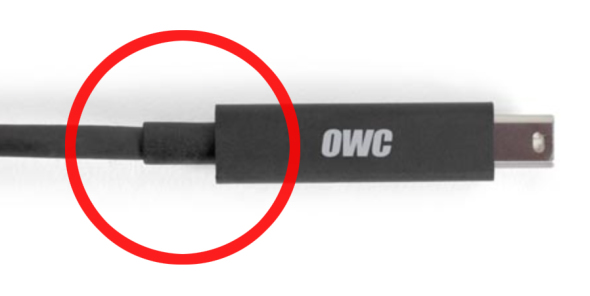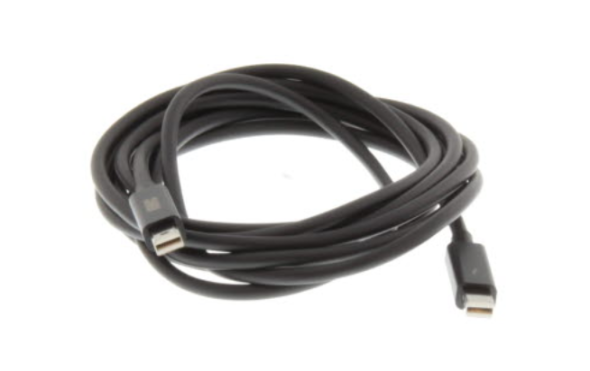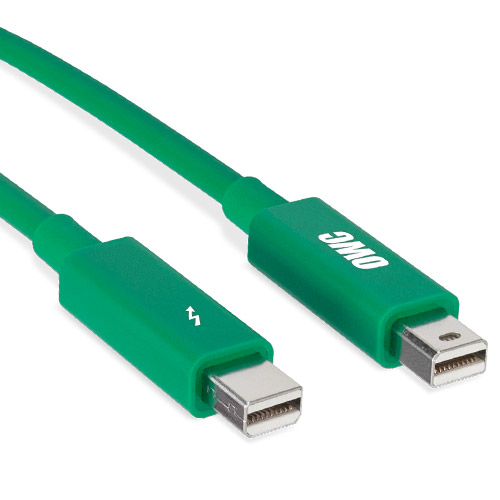Too Many Thunderbolt and Lightning Cables Are Failure-Prone. Demand a Better Connection.
Professional-grade cables are essential for fast and reliable transfer of critical camera and related files in the field. With Apple devices finding more professional applications, the highest quality Thunderbolt and Lightning cables available should be a part of filmmaker’s kit.
But the Thunderbolt and Lightning cables in your kit right now are most likely crap. You know it. I know it. And we continue to suffer dearly for it, with mysterious computer freezes and dog-slow offloads arising from broken conductors and poorly seated connectors. How many of us have to do a nightly wiggle to charge the iPhone, angling the phone and cable just right to make a working connection?
After more than 35 years as a cinematographer traveling the world from Staten Island to the North Pole, I’ve learned one thing above all: 90% of equipment failures in the field arise from defective cables and connectors. Consider the ARRI 16SR when it was first introduced in 1976. I used this camera for decades, shooting for the National Geographic, and I was a contented person. I bought several houses and cars with the proceeds from that camera. One of its big advantages? The camera utilized onboard batteries that eliminated the pesky unreliable cables and plugs. It gave me great peace of mind that this one disproportionate cause of failure in my life was gone forever.
Considering the rigors of life in the field, the stress of travel, and the near-constant tugging and snagging of gear, it’s not surprising that cables and connectors should fail with some regularity. With our iDevices seeing more serious duty on and off the set, we are plugging and unplugging our iPhones, iPads, and MacBooks many times each day, from our first waking moment until our last thought at night. We are reaching for a cable, for charging or data transfer, and pressing it optimistically into a tiny port.
Even though we know our cables are inferior and likely manufactured for pennies in China, we go about our business nonetheless, employing them for critical applications like transfer of original camera footage and other tasks. We do so with nary a worry—until, that is, a cable or connector goes south. Sure, we carry backups. Most of us do. But this is hardly reassuring given the trust we are placing in what is, after all, consumer-grade gear.
Many folks consider a cable a cable and let it go at that. For casual users in a home environment, cheap Thunderbolt and Lightning cables may be good enough. But as professionals, we necessarily demand more. It’s in our DNA. We associate who we are with quality stuff. And good cables, as much as we don’t think about them too often, are integral to who we are and a smooth running reliable operation.
Thunderbolt 2 (soon Thunderbolt 3) is remarkable technology with data rates up to 40 Gbps. At this speed and volume, the flow of data is sensitive to a range of cable and connector snafus. The free cables that typically accompany new hard drives and SSDs often contain too little copper to maintain a smooth, reliable data flow; the longer cables in particular, beyond two meters, inherently offer higher resistance. Longer TB cables should therefore contain heavier-gauge copper conductors to overcome this greater resistance, and that means the longer cables should feel stiffer than the same type of cables in shorter lengths.

When evaluating Thunderbolt cables, look for adequate stress relief around the connector. Broken or intermittent connections caused by physical wear and tear are a common hazard in professional field applications.
Beyond this, most cables fail due to inadequate stress relief where the cable enters the rigid connector. The Thunderbolt transition chip, which is embedded in each end of the cable, is fairly standard. The design is licensed by Intel and Apple and is quite difficult to produce as a cheap knock-off.

Thunderbolt cables beyond two meters in length should contain heavier conductors to maintain low resistance and avoid slow and unreliable data transfers in the field.
But the cable material itself is another story. Cheap cables that are overly stiff are at increased risk of failure at the connector’s point of entry. On the other hand, a cable that is too pliable may also be problematic as it may deteriorate too quickly during use. The best cables combine a high degree of flexibility with just enough firmness to resist breakage. OWC manufactures quality cables with the stated goal of producing cables that will outlast the device or the technology itself.

Some manufacturers, like OWC, offer color-coded cables, which can help keep the mess sorted behind, around, and under our workstations.
For video professionals and itinerant shooters, a locking Thunderbolt connector would be very desirable. Unfortunately, given Apple’s form-over-function mandate, most devices lack the real estate required for a locking mechanism. This means that, for the moment, we are stuck with the less than robust Lightning and Thunderbolt connectors, which frankly do not inspire much confidence in rough and tough media professionals.
For manufacturers, the cost of producing better quality cables can range from a few pennies per unit to several dollars, so the incentive to cut corners can be considerable. Among the general public and even many professionals, the notion that cables are cables, to be treated as commodities, is common, and it’s easy to discount the differences between cables until we encounter a problem.
As shooters and content creators, our fundamental business is capturing, transferring, and managing critical data. Given that cables and connectors are an area of common failure, and so integral to our operations and livelihoods, we simply can’t afford to overlook the quality of these crucial components.
Did you enjoy this article? Sign up to receive the StudioDaily Fix eletter containing the latest stories, including news, videos, interviews, reviews and more.










Leave a Reply